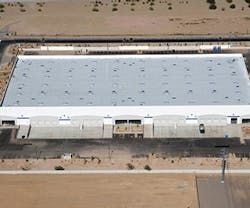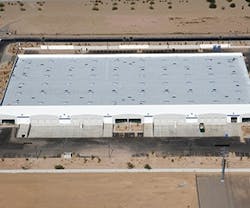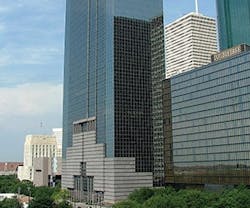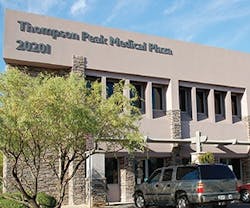Cell Phone Coverage Case Studies
Case Study #1:
Walls Industries, Inc. – Cleburne, TX
BUILDING TYPE
A historic manufacturing and distribution facility housing the
headquarters of a designer and supplier of outdoor apparel.
CHALLENGES
Employees require cell phones to do their jobs. The old concrete, brick, and steel construction killed what little signal was available from the nearest cell tower, over 7 miles away. The company’s existing in-building wireless system was interfering with the roll-out of AT&T’s local 3G network in the region.
SOLUTION
A passive, repeater-based system that caught off-air signal and
amplified it, providing coverage for the 34,150-square-foot facility.
PAYBACK IMPACT
Because the company’s existing system interfered with AT&T’s 3G
network, Walls Industries needed to shut down their system or face fines from the FCC of up to $20,000 per day. A solution was installed over a two-week turnaround, with limited disruption to business.PageBreak
Case Study #2:
Babson College - Wellesley, MA
BUILDING TYPE
Various campus buildings, including academic facilities, dormitories, and a conference center.
CHALLENGES
Wellesley town regulations prohibit cell towers. With no wireless coverage, the conference center risked losing existing and future customers. Amidst multiple complaints, the college was concerned with recruiting and retaining students and faculty. Facilities and public safety services required reliable communications for operations and security.
SOLUTION
A passive, repeater-based system that uses the off-air signal source and amplifies it to provide coverage throughout campus.
PAYBACK IMPACT
A phased approach based upon Babson College’s annual budgeting process rationalized the investment. Existing fiber was used for a large part of the system, allowing Babson to save on installation costs.
Case Study #3:
Heritage Plaza - Houston, TX
BUILDING TYPE
A 53-story building with 1,150,000 square feet of leasable office space.
CHALLENGES
The congested nature of downtown Houston caused weak wireless coverage in the building. Prior to signing a 12-year, 10-story lease, Deloitte & Touche USA, LLP required Heritage Plaza owners to rectify the issue of weak signal in the space.
SOLUTION
An active, distributed antenna system (DAS) network, which consists of a neutral host that allows all wireless carriers to come on and offers dedicated capacity to the space.
PAYBACK IMPACT
The DAS infrastructure became a competitive differentiator for Heritage Plaza. A major, multi-floor tenant signed upon installation, with many new tenants following.PageBreak
Case Study #4:
Scottsdale Healthcare - Scottsdale, AZ
BUILDING TYPE
Three medical centers with more than 800 beds and service areas of oncology, cardiology, and orthopedics.
CHALLENGES
Unique physical barriers that shield signal include wall structure and density, X-ray rooms, and coated glass. In addition to numerous patient and visitor complaints, the physicians preferred to use cell phones rather than the hospital’s paging system. The installation could not interfere with emergency frequencies or security radio.
SOLUTION
An active, distributed antenna system (DAS) infrastructure connected to a series of indoor antennas, providing dedicated capacity to the medical center.
PAYBACK IMPACT
The solution used the hospital’s existing fiber to save time and money. The installation resulted in improved quality of care and increased productivity.




